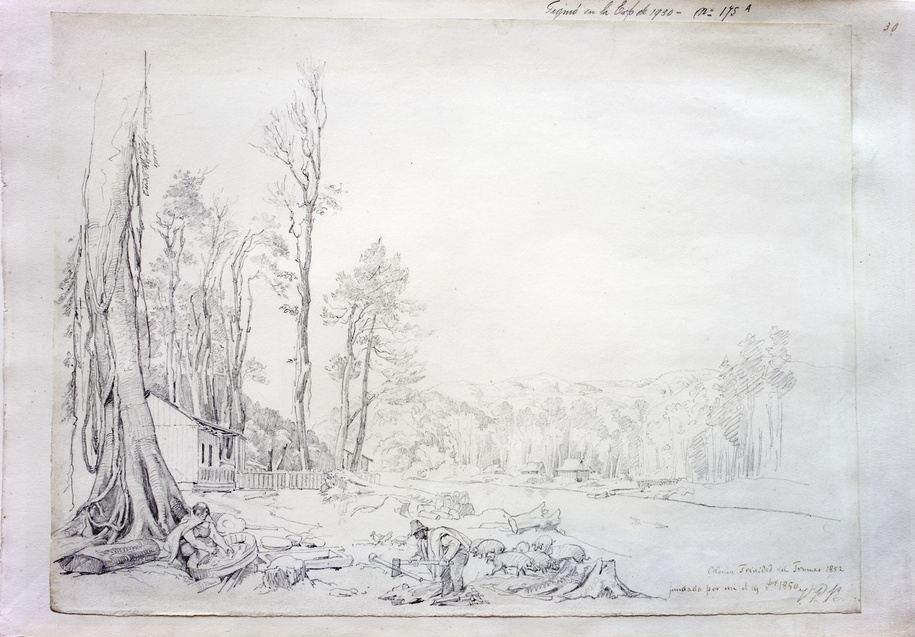On 19 February 1850, artist Carl Alexander Simon (1805 – 1852) went on board ship at the Port of Hamburg en route for Chile. There, driven by the idea of settling the south of that country and “civilizing” it, he wished to found a “new Germany” – a fatherland that in his fantasy was completely untouched by human hand, and which he called the “original country”. It was, he wished, to be free of the burden of Old Europe and to follow the motto he formulated in 1848: “If you cannot take the tyrants away from the people, so take the people away from the tyrants.”
In actual fact, Simon and other Germans started on arrival in Valdivia in June 1850 to lay the foundations for a colonization on the shores of Lake Llanquihue – on land that belonged to the Mapuche, one of Chile’s largest indigenous tribes, something that to this day leads to tensions among the settlers. Until his death in 1852, Simon busied himself with helping establish the colony and produced hundreds of drawings in which he recorded the life, the physiognomy, and the traditions of the Mapuche. In 1850, his magnum opus “Auswanderung und deutsch-nationale Kolonisation von Süd-Amerika mit besonderer Berücksichtigung des Freistaates Chile” was published, in which he vehemently advocated that Chile be occupied and settled by the Germans.


